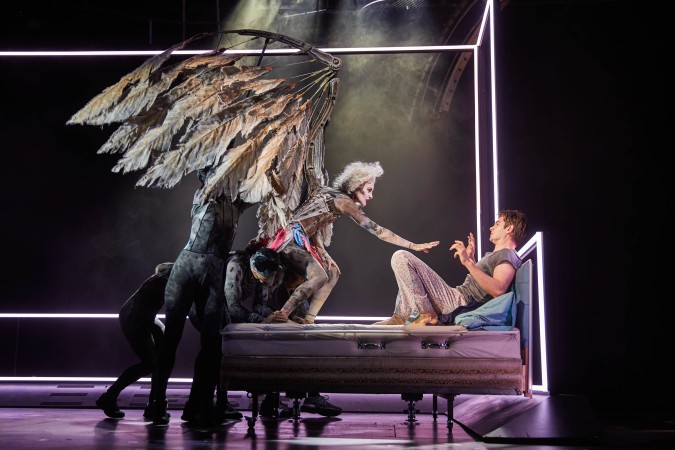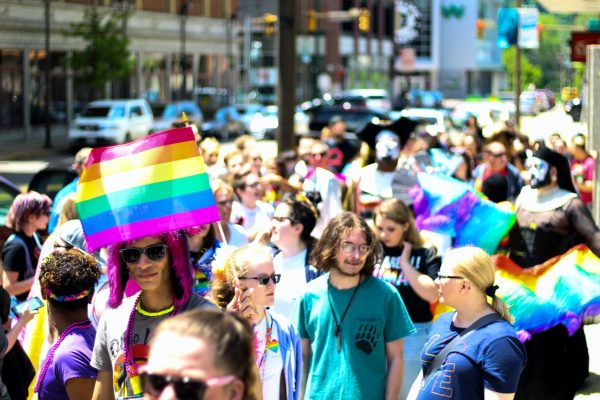Tony Kushner’s legendary, 7.5-hour epic drama “Angles in America: A Gay Fantasia on National Themes,” which opened at the Neil Simon on Sunday, consists of two parts: “Millennium Approaches” and “Perestroika.” When the play premiered in 1993, these were both relevant concepts: a new millennium and the Soviet Union. But at its core, it is a chilling work about the AIDS crisis, national gay identity, and Reagan-era homophobia.
Somehow, in 2018, all of these things seem shockingly distant, belonging more to the pages of a history book than the evening news. After all, the Soviets have come and gone, the new millennium has been around for a while, and in the age of PReP, the AIDS crisis feels distant to a current generation of gays growing up in the world. Most of these young queer people don’t know who Roy Cohn or Mikhail Gorbachev is, after all.
But, thank god, almost everyone has heard of “Angels in America,” and once the young people arrive, the production will fill in the gaps and provide them with their much-needed education in gay history. That being said, it will not be a quick lesson: 9 acts, 5 intermission, 2 parts, 7.5 hours does not fly by.
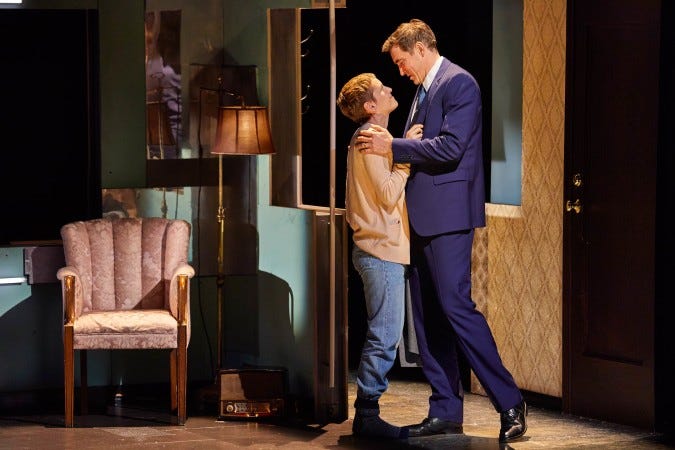
This London-transfer revival, directed by Marianne Elliott, is as grand as ever, proving that the “gay fantasia” subtitle is not just some eloquent add-on by the playwright. The play sweeps through the stories of Roy Cohn, ruthless McCarthy lawyer who was famously closeted; Mormon couple Joe and Harper, the former questioning his sexuality the later addicted to Valium; and Walter Prior, a former drag queen with relationship issues. Very quickly lesions pop up, characters start getting AIDS diagnoses, and things get more complicated.
In a play so complicated, it takes a skilled director to balance all the characters (or should I say actors) and their many subplots. Sadly, it seems that perhaps Elliott was not up for the job. Nathan Lane as Roy seems oddly flamboyant and comedic, trying to fill all his stage time by screaming or trying to get the audience to laugh. Lee Pace as Joe aimlessly tries to figure out his sexuality, but gets nowhere, lost in massive production. Denise Gough gives a Harper much more annoying than lethargic, a unique take on the character that simultaneously grounds the character but also makes her less compelling. At the center (or to be more accurate, usually off to stage left for some unknowable reason), is Andrew Garfield as Prior, who seems to be an almost star, and with the right director maybe he could have been a star. His mannerisms are somewhat caricaturish but his raw emotion does justice to the power of Kushner’s words. The direction lacks a clear center or focal point, with each of these four actors fighting for the spotlight. In the end, I’d give the crown to Garfield.
The design of the production was equally disjointed; sets by Ian MacNeil, costumes by Nicky Gillibrand, and lights by Paule Constable. Part 1 consisted of various rooms lined in neon-tubing that spun in and out, helping the many scenes flow into each other — Kushner has a famous “no blackouts” rule for the play. Part 2 continued the neon theme but with an oddly bare stage where large individual set pieces were constantly being rolled in and out by visible stage hands/dancers (more on that later). It is rather unclear what happened between Part 1 and Part 2 and why the worlds were constructed in such different ways, with neon being the only real connection. The neon itself also was a bizarre choice, that felt eerily reminiscent of the recent “Torch Song” revival; will the upcoming “Boys in the Band” also have neon set, as well? Is there something that says “NEON” about 90’s gay plays?
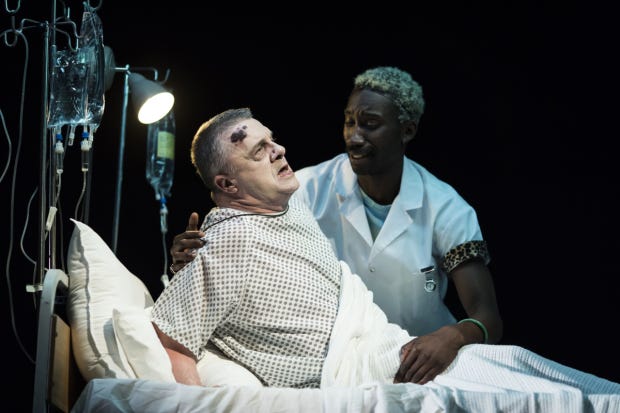
Praise must be given to the supporting cast, all who play various roles: James McArdle, Susan Brown, Amanda Lawrence, and Nathan Stewart-Jarrett. These actors helped to round out the piece, to give the four leads some emotional grounding, and most importantly, some scene partners that they didn’t feel the need to compete with.
Yes, this may be an imperfect production, but the play itself makes up for this. For all the places where the director’s weakness shows, the genius of the playwright shines and distracts. “Angels in America” is a masterpiece, and this production proves it. It is heart-wrenching, funny, emotionally moving, and most of all real.
For all of the young people out there who have heard of “Angels in America” but have never seen or read it: please go see this production. You will learn, and you will cry. For those of you who already know and love the play, see it again, be amazed and overwhelmed at how different it feels in 2018, how some things feel outdated and how other things feel hauntingly timeless.
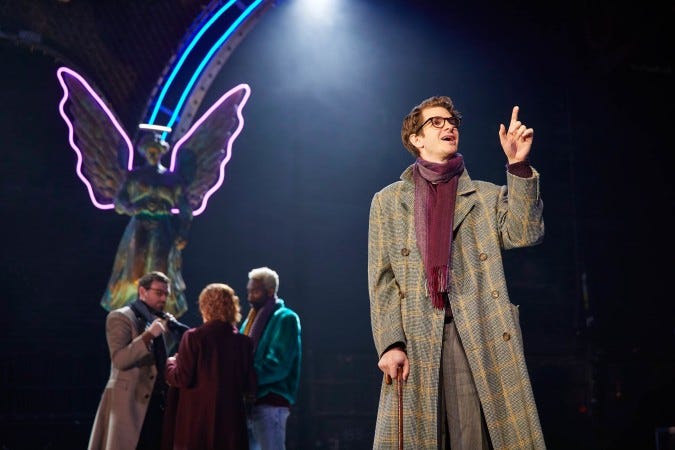
To close, I must address the Angel in the room (played by Amanda Lawrence and alternatively by Beth Malone). In this production, she is no longer glorious in a flowing white gown and harness, gently floating above the prophet Prior with majestic wings outstretched. She is terrifying and ugly and dirty, wears a rusted corset, and a ripped American flag skirt is held aloft by dancers and has tattered wings. Instead of resembling the Mormon Mother, she is a replica of the Homeless Woman (both minor parts are played by the same actress as the Angel). Some may say this represents the tarnished state of America, but I believe it is a commentary on how the Angel is incorrect in her doctrine. There may be angels in America, but if their message is anti-immigration and anti-progress, they are not majestic. They are Republican, and they are wrong. After all, we won’t stand still. The great work may have begun, but we have a long way to go.


